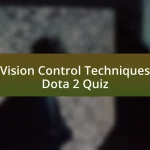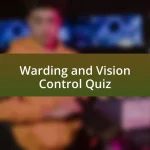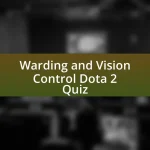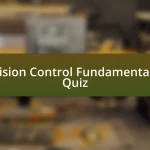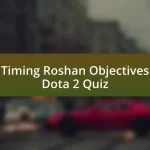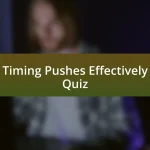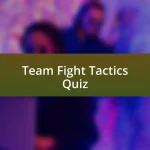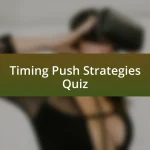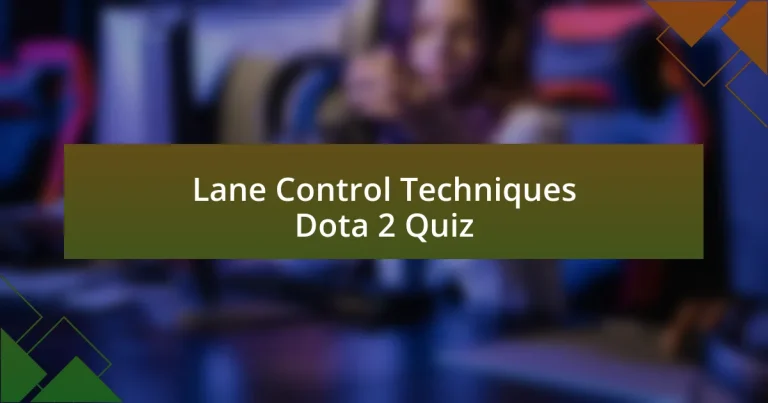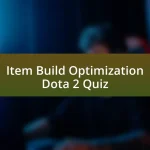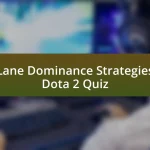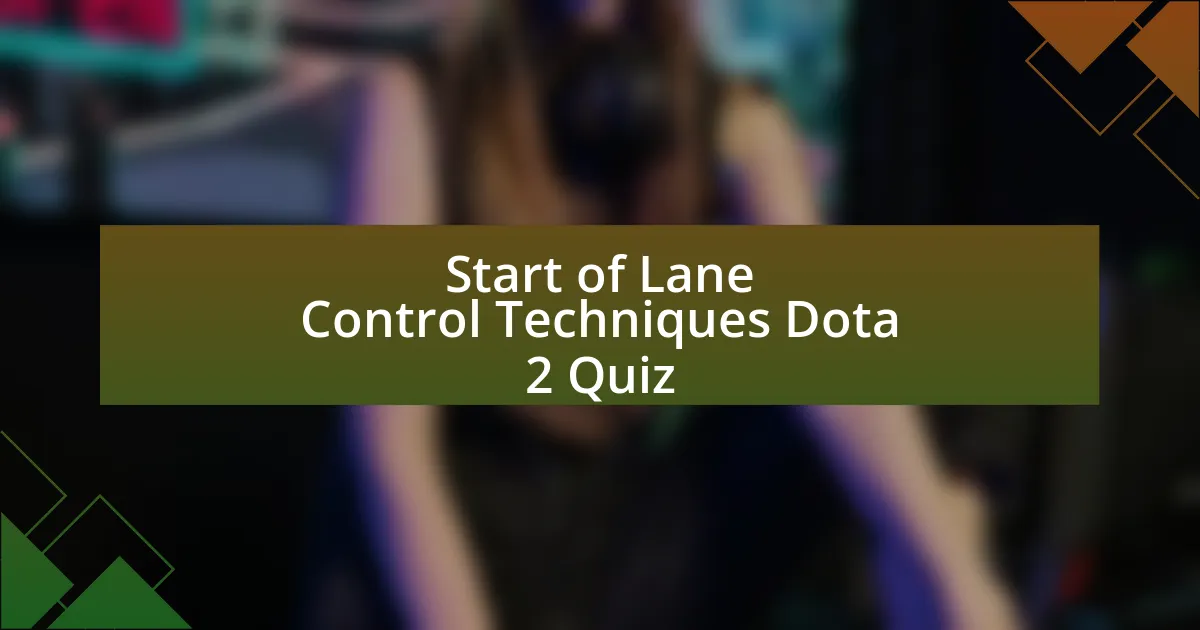
Start of Lane Control Techniques Dota 2 Quiz
1. What is the primary goal of managing your lane in Dota 2?
- To stay near your tower and avoid all confrontations.
- To push the lane as quickly as possible and attack enemy towers.
- To maximize your own side`s farm and experience while minimizing that of your opponents.
- To secure kills on enemy heroes regardless of lane position.
2. Where should the creep wave ideally be positioned in the lane?
- Near or on top of your tower, but not within range of it.
- Behind your tower.
- In the middle of the lane.
- At the enemy tower.
3. What happens if the creep wave is within range of your tower?
- The tower will only attack enemy heroes in range, ignoring creeps entirely.
- The tower will become invulnerable, preventing any damage from occurring.
- The tower will start attacking enemy creeps, making it harder to last hit and rapidly pushing the lane back out again.
- The tower will heal itself to gain back lost health from prior engagements.
4. What is the effect of last hitting on the lane?
- It prevents any enemy heroes from gaining experience.
- It increases the amount of gold earned by the enemy team.
- It pushes the lane a small amount by inflicting extra damage to the opposition creeps.
- It makes enemy creeps invulnerable for a short time.
5. How does attacking enemy creeps affect the lane?
- It causes your wave to stay stagnant without changing anything.
- It has no effect on lane control or dynamics.
- It begins to push back their wave as you reduce their health.
- It makes your creeps more vulnerable to enemy attacks.
6. What is the impact of using abilities on the lane?
- It automatically guarantees a kill on the opponent, shifting lane advantage.
- It primarily increases your health and mana, allowing you to stay in lane longer.
- It can vary, but generally, using abilities can push or pull the lane, affecting its position.
- Using abilities has no real impact on the positioning of the creep wave.
7. Why is maintaining lane balance crucial for mid-laners?
- It makes it easier for side lanes to farm without any pressure.
- It allows them to control the lane effectively and zone out their opponents.
- It grants them bonus gold and experience for every enemy killed.
- It forces the enemy to rotate to different lanes constantly.
8. What is creep blocking in the context of lane control?
- It refers to the process of healing your creeps to make them stronger.
- It is the tactic of spawning additional creeps to overwhelm the opponents.
- It means strategically moving your hero back to regain health quickly.
- It involves preventing enemy creeps from reaching your tower by using abilities or auto-attacks.
9. How does denying creeps affect the enemy team?
- It increases the health of enemy towers in the lane.
- It causes the enemy team to gain more experience from nearby creeps.
- It reduces the enemy carry`s ability to farm, thereby limiting their gold and item acquisition.
- It buffs the enemy hero`s stats, making them stronger.
10. What is the purpose of pulling creeps in the lane?
- To control enemy towers by attacking them with your creeps.
- To balance the lane by bringing creeps closer to your tower and away from the enemy`s tower.
- To increase the speed at which you can push lanes to enemy towers.
- To summon additional creeps to help in team fights.
11. What is zoning enemies in the context of offlane?
- Secure kills by ganking enemy heroes in their lane.
- Using abilities and auto-attacks to keep enemies away from creeps.
- Focus solely on farming to gain more experience.
- Evade enemy attacks to stay alive in the lane.
12. What is the importance of controlling last hits in the lane?
- It increases the amount of enemy health you can deplete easily.
- It ensures that your opponents cannot farm effectively at all times.
- It prevents your lane from getting pushed towards your tower consistently.
- It is key to gaining gold and experience, which are essential for hero progression.
13. How does positioning affect survival in the lane?
- Positioning yourself so that enemies cannot easily attack you, using the fog of war and forest for safety.
- Moving constantly without maintaining a safe distance from opponents.
- Ignoring enemy positioning and farming without regard for safety.
- Staying in the middle of the lane to engage every enemy directly.
14. What is creep manipulation in the context of lane control?
- Pushing all creeps towards the enemy`s side of the lane.
- Controlling the creeps so that the lane stays closer to your tower.
- Allowing enemy creeps to destroy your tower quickly.
- Blocking enemy creeps from reaching your tower.
15. What is the role of harass in lane control?
- Using abilities and auto-attacks to reduce the health of enemy heroes without exposing yourself to great risk.
- Farming jungle camps to gain experience without contesting enemies.
- Auto-attacking creeps only to push the lane aggressively.
- Waiting for enemies to overextend without any proactive actions.
16. When should you retreat to the jungle during the laning phase?
- If the lane becomes too dangerous, move to the jungle to farm safely.
- If your allies are not getting last hits in the lane.
- When your hero runs out of mana and health.
- When the enemy team is not visible on the map.
17. What is the significance of vision in controlling the map?
- It reduces the damage dealt by enemy heroes during battles.
- It increases the attack damage of friendly creeps.
- It provides additional health regeneration for your team.
- It allows you to farm relatively safely and make smart decisions about initiating fights or retreating.
18. How does shoving in lanes contribute to map control?
- It lets opponents farm safely without any risk of losing creeps.
- It creates a direct path for enemy creeps to your tower, increasing pressure.
- It ensures your creeps stay in the jungle, avoiding engagement with the enemy.
- It provides information and vision to help decision-making, limiting the enemy`s attack points.
19. Why is killing the enemy safe lane tier one tower important?
- It allows more creeps to spawn in the lane for your team.
- It grants a temporary boost to all your heroes` abilities.
- It opens up the map for your team and reduces the space available to the enemy.
- It gives your team an instant gold reward for every enemy hero.
20. What is the impact of dominating the hard lane on your team`s overall strategy?
- It allows your team to control key areas of the map, gain vision, and dictate the flow of the game.
- It focuses solely on denying enemy heroes without contributing to objectives.
- It limits your team`s ability to contest objectives and farm effectively.
- It mainly benefits only the hard lane hero without affecting other lanes.
21. How does Tiny manage the laning stage effectively?
- By tossing opponents under the tower, making them tank the tower`s attacks, and using abilities like Avalanche to keep them in range.
- By always engaging in fights without considering tower positioning or enemy abilities.
- By pushing all lanes aggressively without any regard for his team`s position.
- By avoiding fights and focusing only on farming quietly in the jungle.
22. What is the importance of starting items in the laning stage?
- They increase movement speed, helping heroes escape ganks.
- They grant heroes additional health regeneration to enhance survivability.
- They allow heroes to teleport instantly back to base without mana cost.
- They provide crucial range and damage, allowing heroes to secure last hits and stay out of enemy auto-attacks.
23. Why is Tree Throw important for Tiny in the laning stage?
- It grants Tiny extra gold for each enemy hit, enhancing his economy in the lane.
- It boosts Tiny`s range, allowing him to stay out of enemy auto-attacks and secure last hits effectively.
- It increases Tiny`s armor, making him tankier against incoming attacks.
- It allows Tiny to temporarily disable enemies, preventing them from attacking.
24. How does blink dagger impact Tiny`s gameplay in the laning stage?
- It reduces Tiny’s health regeneration during fights, making him more vulnerable.
- It allows Tiny to quickly disengage and re-engage fights, picking up kills and gaining an advantage.
- It prevents Tiny from last hitting effectively, pushing him out of lane for longer periods.
- It increases the cooldown of Tiny`s abilities, limiting his effectiveness in skirmishes.
25. What is the significance of playing side lanes for Tiny?
- It allows him to easily kill level 3-5 side laners, gaining easy kills and pushing in other lanes.
- It ensures he can out-farm his opponents in the jungle effectively.
- It prevents enemies from gaining experience by pushing towers.
- It helps him dominate the mid lane and gain an item advantage.
26. How does Tiny manage his farm and last hits in the laning stage?
- By only using abilities to harass opponents without focusing on last hits.
- By tossing opponents under the tower while maintaining high CS.
- By constantly pushing the lane and ignoring tower positioning.
- By avoiding enemy heroes and farming safely without aggression.
27. What is the role of avalanche in Tiny`s laning stage strategy?
- It increases the distance opponents can farm safely without risking damage.
- It helps Tiny keep opponents in range of the tower, allowing them to take tower damage and stay in the fight.
- It prevents Tiny from maximizing his gold and experience gain by pushing the lane.
- It minimizes Tiny`s ability to farm effectively, making it easier for enemies to push the lane.
28. How does Tiny handle rotations during the early game?
- He avoids overexerting himself, focusing on getting last hits and securing items before rotating.
- He constantly roams to assist other lanes without caring for his own farm.
- He primarily focuses on pushing towers instead of managing his own lane.
- He tries to engage in fights without proper items or support.
29. What is the impact of haste runes on Tiny`s gameplay?
- They grant Tiny the ability to heal himself rapidly during engagements.
- They allow Tiny to quickly move between lanes, securing last hits and gaining an advantage.
- They increase Tiny`s damage output significantly, making him a stronger fighter.
- They reduce the cooldowns of all Tiny`s abilities, allowing for more frequent use.
30. How does Tiny handle enemy rotations during the laning stage?
- He stays passive and avoids engaging with enemies in any capacity.
- He pushes all lanes aggressively without considering safety.
- He uses his abilities and positioning to stay safe while still managing to last hit and deny creeps.
- He initiates fights aggressively, focusing solely on enemy heroes.
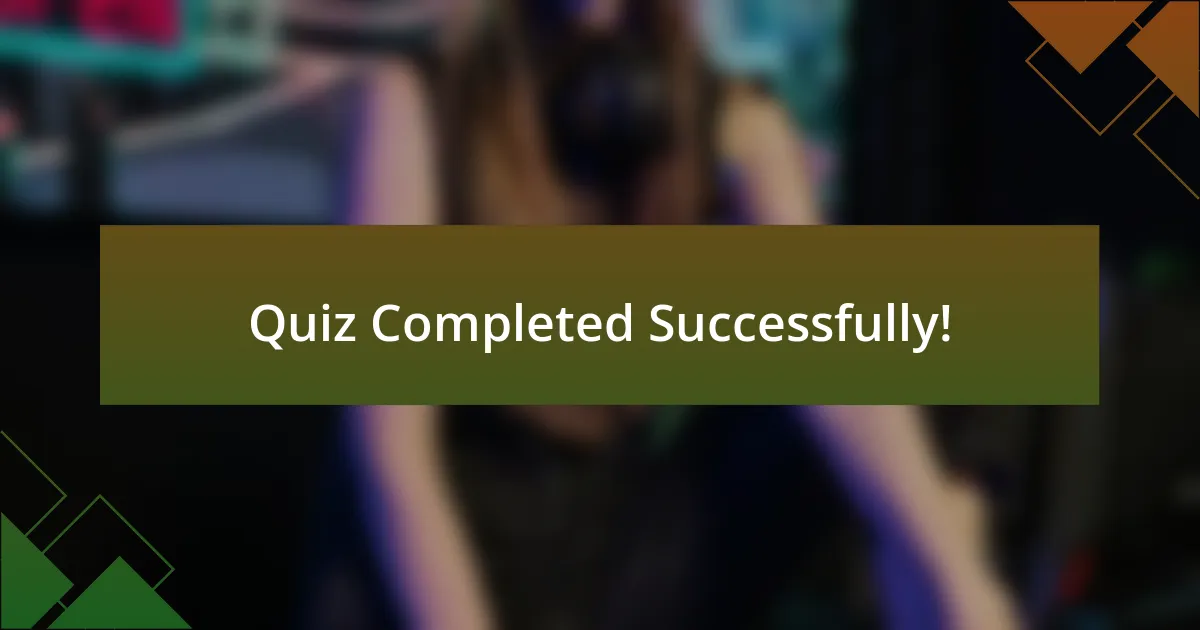
Quiz Completed Successfully!
Congratulations on completing the quiz on Lane Control Techniques in Dota 2! It’s fantastic to see your engagement with such an essential aspect of gameplay. Through this quiz, you’ve likely gained insights into vital strategies for controlling the lane. From last-hitting to understanding creep aggro, these skills can significantly impact your performance in the game.
Many players underestimate the importance of lane control. Mastering these techniques allows you to dictate the pace of the game. You’ve also learned how to improve your positioning and map awareness. These skills not only help you farm better but can protect you from ganks, giving you an edge over your opponents.
If you’re eager to delve deeper into Lane Control Techniques, we invite you to check out the next section on this page. It offers more detailed information and practical tips that can further enhance your understanding. Keep honing your skills, and may your games be more successful!
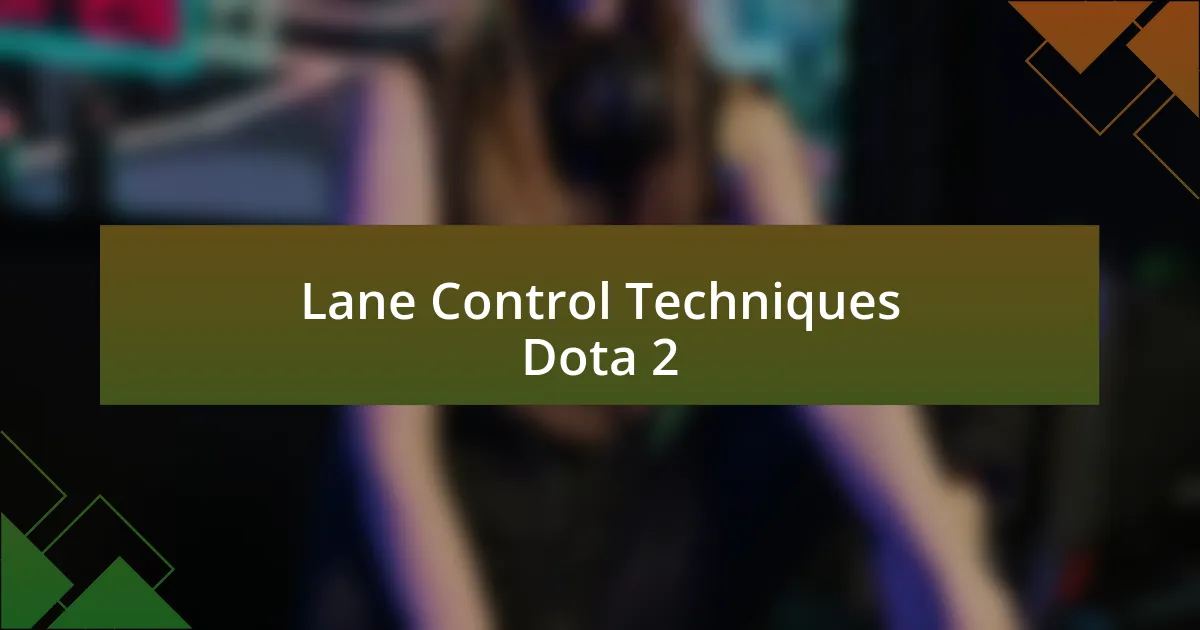
Lane Control Techniques Dota 2
Understanding Lane Control in Dota 2
Lane control in Dota 2 refers to the strategic manipulation of creeps and positioning in the lane. It is crucial for gaining an advantage over opponents. Proper lane control allows players to deny enemy farm while securing their own. By influencing creep equilibrium, players can dictate the pace of the game. This technical skill involves last-hitting, denying, and using abilities effectively. Successful lane control sets up opportunities for ganks and subsequent phases of the game.
Key Techniques for Lane Control
There are several key techniques that players use for effective lane control. These include last-hitting, denying, pulling creeps, and managing creep equilibrium. Last-hitting refers to inflicting the final blow on creeps to gain gold. Denying involves attacking your own creeps before the enemy can secure the kill. Pulling is a technique used to reset the creep equilibrium. Balancing these aspects allows players to maintain lane pressure. Mastering these methods is vital for any player aiming to improve their lane phase.
Last-Hitting and Denying Mechanics
Last-hitting and denying are two core mechanics of lane control in Dota 2. Last-hitting is the act of timing attacks to secure gold and experience from enemy creeps. Denying allows players to maximize their experience while minimizing that of the opponent. Learning the timing and damage of various heroes is essential for these mechanics. The visual and audio cues of creeps indicate when they are near death, aiding in execution. Mastery of these skills can swing lane control significantly.
Creep Equilibrium and Its Importance
Creep equilibrium refers to the position of the creep wave in the lane. A balanced creep wave ideally sits near your tower but not under it. Maintaining this position allows for safety from enemy heroes and greater farming potential. If the waves are pushed too far towards the enemy, it can lead to danger from ganks. Effective manipulation of creep equilibrium can provide substantial advantages in the lane. Understanding how to pull and stack camps helps in achieving ideal positioning.
Advanced Lane Control Strategies
Advanced lane control strategies involve deeper tactical plays, such as stacking camp pulls and understanding enemy patterns. Stacking camps allows players to maximize farm potential by creating larger creep waves. Observing the enemy’s movements can inform decisions on when to push or retreat. Additionally, zoning enemies during crucial last-hitting moments can disrupt their ability to farm. These strategies often require practice and a keen awareness of the game flow, elevating a player’s impact on the match.
What are Lane Control Techniques in Dota 2?
Lane control techniques in Dota 2 refer to various strategies players use to manipulate the behavior of minion waves in a lane. These techniques include last hitting, denying enemy creeps, and using creep aggro to influence lane positioning. Proper execution of these techniques is crucial for gaining gold and experience advantage over opponents.
How do you effectively last hit in a lane?
To effectively last hit, a player must time their attacks so that they strike enemy creeps when their health is low, preventing opponents from gaining gold. It requires practice to develop the ability to gauge damage and attack timing, considering factors such as attack animations and creep damage. Additionally, keeping track of the creep waves’ health is essential for successful last hitting.
Where should I position myself to control the lane?
Positioning to control the lane involves standing near the creep wave while avoiding damage from enemy heroes. Ideally, you should position yourself close enough to last hit creeps but far enough to draw enemy aggro, preventing your creeps from pushing toward the enemy tower. This positioning helps maintain a favorable lane equilibrium.
When is it best to deny creeps?
It is best to deny creeps as soon as their health drops to around 50%, as this prevents the enemy from gaining gold and experience. Denying your own creeps not only limits opponents’ resources but also helps in maintaining lane control. Strategic denying can significantly impact the overall lane dynamics in your favor.
Who benefits from good lane control techniques?
Both carries and support heroes benefit from good lane control techniques. Carries require a steady income of gold and experience to scale into late game effectively, while supports can deny opponents’ resources to help their carry. Proper lane control creates a foundation for strategic advantages throughout the match.



